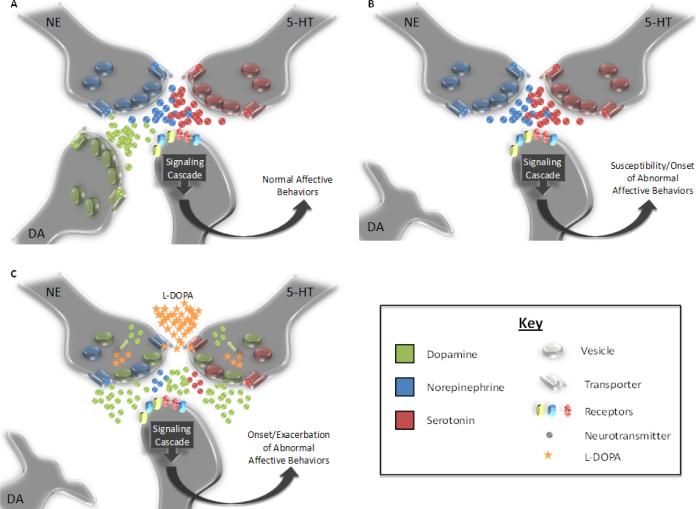Figure 2.
Representation of possible effects of PD and subsequent L-DOPA treatment on the forebrain monoaminergic synapses. A) In the normal brain, balance is maintained between NE, 5-HT, and DA release among forebrain post-synaptic neurons that ensures normal affective behaviors. B) Following the loss of SNc neurons, DA loss modifies synaptic neurotransmission and may induce either the onset or a susceptibility to affective disorders. C) While exogenous L-DOPA treatment replaces DA within the synapse, it may supplant non-dopaminergic neurotransmission. For example, 5-HT and NE neurons take up L-DOPA via their respective transporters, convert it to DA via AADC, and release it in forebrain regions following DA depletion (Arai et al., 2008; Kannari et al., 2001). Such mechanisms have preliminarily been shown to usurp NE and/or 5-HT function (Eskow Jaunarajs et al., in press; Navailles et al., 2010a, 2010b). The reduction in 5-HT and NE function may portend the onset or exacerbation of anxiety and depression in PD patients undergoing L-DOPA treatment.

